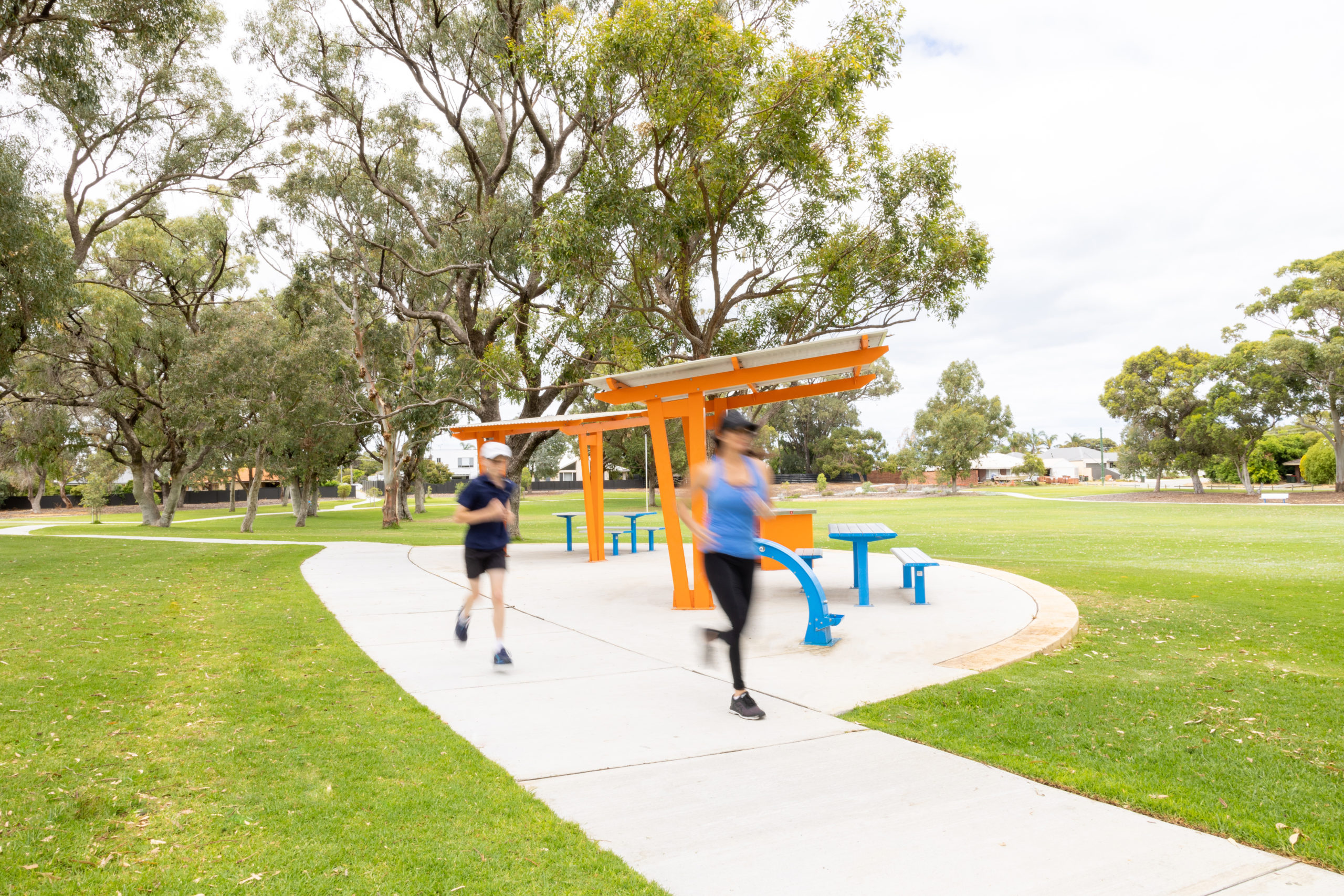February 13, 2023
Did you know that 86% of Australians live in just five cities? As our suburbs densify and public land becomes scarcer, access to quality green space becomes a public health issue.
The 2025 Urban Green Space Provision Study, published in the Medical Journal of Australia, reveals how inequitable access to parks and poorly integrated public space planning due to urbanisation are contributing to widening health disparities in Australian cities.
For councils, urban designers and landscape architects, the message is clear: urban design needs to do more - and so does the street and park furniture within it.
Here are three evidence-backed takeaways from the study - and how they inform best practice for street furniture specification and outdoor space designs in Australia:
1. The 3-30-300 Rule
One of the most impactful contributions of the 2025 Urban Green Space Provision Study is its formal endorsement of the 3-30-300 rule - a clear, evidence-based guideline that connects urban green space provision to measurable health outcomes.
The rule recommends:
- 3 trees visible from every home
- 30% tree canopy cover in every neighborhood
- 300 meters or less from every home to a high-quality green space
Originally proposed by urban greening expert Dr Cecil Konijnendijk, this is the first time the rule has been formally legitimised in an Australian health and urban planning context. Its inclusion in the study signals a shift toward quantifiable, scalable benchmarks - offering councils, landscape architects, and urban designers a practical framework for building healthier, more equitable neighbourhoods.
From a furniture and infrastructure perspective, the rule reinforces the need for:
- Shaded park seating and outdoor benches to support canopy integration
- Modular street furniture and space-efficient park amenities for small or underutilised areas
- Park infrastructure that enhances accessibility and encourages daily engagement with green spaces
GX Outdoors Pandanus™ Shade Modular System - exclusive permanent modular shade structure designed for flexible, scalable urban green spaces.
2. Furniture Design Can Boost (or Undermine) Health Outcomes
The study makes a strong, evidence-backed claim that infrastructure choices influence how people behave in green spaces - how long they stay, whether they feel safe, and whether they come back.
In lower-income areas, green spaces with no seating, shade, or lighting saw 40–60% less usage, especially among older residents and women. In contrast, spaces with these amenities had higher rates of physical activity and longer visit durations.
Features like comfortable park seating, shaded areas, pathways, lighting, and inclusive amenities are not decorative — they’re behavioural tools. For example:
- Shaded seating encourages people to rest and linger — essential in hot climates where heat can otherwise discourage use.
- Pathways and lighting increase feelings of safety and walkability, especially for women, older adults, and those using mobility aids.
- Clustered or social seating promotes chance encounters and connection, which are linked to reduced isolation.
The study also reinforces that green space is public health infrastructure, particularly for low-income and marginalised communities, who often lack access to private gardens or air-conditioned spaces. The study links infrastructure provision to measurable health outcomes - including reduced social isolation, higher physical activity rates, and lower self-reported stress in well-equipped green spaces.
This moves green space out of the “nice to have” category - and into core health and equity planning. Get inspired and explore our project examples here
3. Maintenance Matters
Even the best-designed green spaces can fail to deliver health benefits if they’re not properly maintained. The study found that neglect — such as broken furniture, litter, graffiti, or overgrown vegetation — directly reduces how safe and welcome people feel in a space.
In fact, community members in lower-income areas were significantly less likely to use nearby green spaces if those spaces appeared unsafe or unkempt. Reported levels of comfort, trust, and perceived safety dropped by up to 50% in poorly maintained areas, particularly among women, older adults, and young families.
Designers can directly support long-term usage and community trust by specifying furniture that resists wear, is easy to clean or repair, and maintains its visual appeal over time including:
- Metal furniture with anti-graffiti coatings reduced maintenance costs by up to 30% compared to untreated timber or plastic.
- Modular park furniture designs that allow easy replacement of damaged parts improve long-term community satisfaction and usage.
- A sense of ownership of green spaces reduces vandalism by up to 25%. This can be achieved by incorporating local symbols and artwork into the design and street furniture, strengthening the community’s connection to the space.
- Avoid overdesigning with heavy, permanent structures that can feel unwelcoming; opt for balanced, human-scale durable furniture instead.
This insight shifts the focus from just designing spaces to designing for longevity — especially in regions where maintenance resources are stretched.
GX Outdoors TimberImage Street and Park Furniture – Combining the warm timber look with durable, low-maintenance aluminium built to withstand heavy use and reduce upkeep costs.
Final Thought
The 2025 Urban Green Space Study represents a major advancement in urban planning and public health policy in Australia. It firmly establishes green spaces - and their supporting infrastructure - as critical health infrastructure, especially for marginalised communities with poorer health outcomes who often lack access to private outdoor spaces and quality amenities.
The study urges planners, councils, and designers to prioritise equitable access by setting measurable targets like the 3-30-300 rule, and to move beyond simply providing green areas toward delivering well-designed, well-maintained spaces with functional, inclusive furniture that encourages use, safety, and social connection.
Its central message: urban green space planning must be evidence-driven and health-focused, recognising green spaces as vital public health assets that require strategic investment, ongoing maintenance, and meaningful community involvement to reduce health inequities and improve wellbeing across all populations.
Our mission is to enrich lives through thoughtful engineering and design, guided by research like the 2025 Urban Green Space Study. We’ve partnered with many clients to create impactful public spaces, including our Acacia Shelter with a custom green canopy at Brisbane’s Global Food Markets. This vibrant, multicultural precinct serves a diverse community, including many migrant and lower-income families who benefit greatly from accessible, welcoming outdoor environments.
Get inspired and explore our project examples here

.jpg?width=348&height=261&name=PI%20Pandanus%20JPEG%20(3).jpg)



 Back to News
Back to News 



